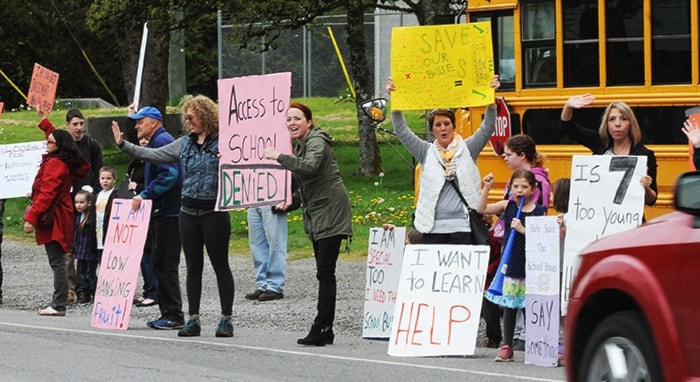Editor. The News:
Re: New bus system ‘set up for failure’ (The News, June 17).
After a year of lobbying to reinstate school buses, by parents of children who live in rural areas with no transit, the school board recently received additional administrative funding equal to the funds previously used for school buses.
Considering the school board told parents last year that the reason buses were cut was due to lack of administrative funding, the expectation of parents, and government, was that trustees would use the additional funds to re-instate the buses.
Up until last week, it looked like the board would not reinstate the buses. Trustees dug in their heels and, despite what they said last year, and their stated concern regarding rural kids not being able to get to school, they placed little priority on doing the right thing.
Another reason they said it was not likely they would use the additional administrative money for buses was because it was a ‘one time’ funding from the government.
This actually changed within a few days when the government announced the funding would be ongoing. But for some reason, the board did not communicate that fact on the district website. However, trustees were very quick to communicate at the time the funding was only for one year.
Then, just last week, the school bus parents heard via the media that the board was indeed going to reinstate the buses and we eagerly looked at the ‘pilot’ plan it was proposing.
It was the cheapest and weakest plan the board could have come up with – the money allocated to the service was a third of what it was before and trustees decided to use the rest of the funds for non-administrative savings.
The pilot plan left many riders who currently ride the bus ineligible. It doubled the fees (from $200 to $400) for those who met the stringent criteria, provided no maximum fees for multiple children (a family with three bus students would be charged $1,200), meaning some families could not longer afford the buses, and would not allow ‘courtesy’ riders – children who live just under the high walk limits or children who go to a non-catchment school because their catchment school is full.
Trustees were told the plan was doomed for failure. They were told that the district would have the highest fees and walk limits compared to most B.C. school districts. But none of that mattered to them – they didn’t even seem aware of what other districts do. Shouldn’t they have looked at other districts first before coming up with the pilot criteria?
Within a few days, the board had voted on and approved the plan, despite concerns from parents about the details of the plan.
Trustees seem to be ignoring the information given to them about other school districts. They seem to think they are ‘different’ in some way and don’t have the same obligations towards ensuring children in rural areas can get to school and get there safely.
If one child who is now ineligible to ride the bus because they live 0.1 kilometres from another child who is eligible, is attacked by a bear or cougar, parents will hold the board accountable.
This fiasco would not be happening if the government regulated school bus eligibility criteria, walk limits, fees and provided dedicated funding to all school districts in rural areas.
Leaving it up to each school board to decide is unfair and non-inclusive and leads to some B.C. children being treated better than others.
Parents of School District No. 42 children who need the school buses have found this out the hard way.
Anita Brierley
Maple Ridge
